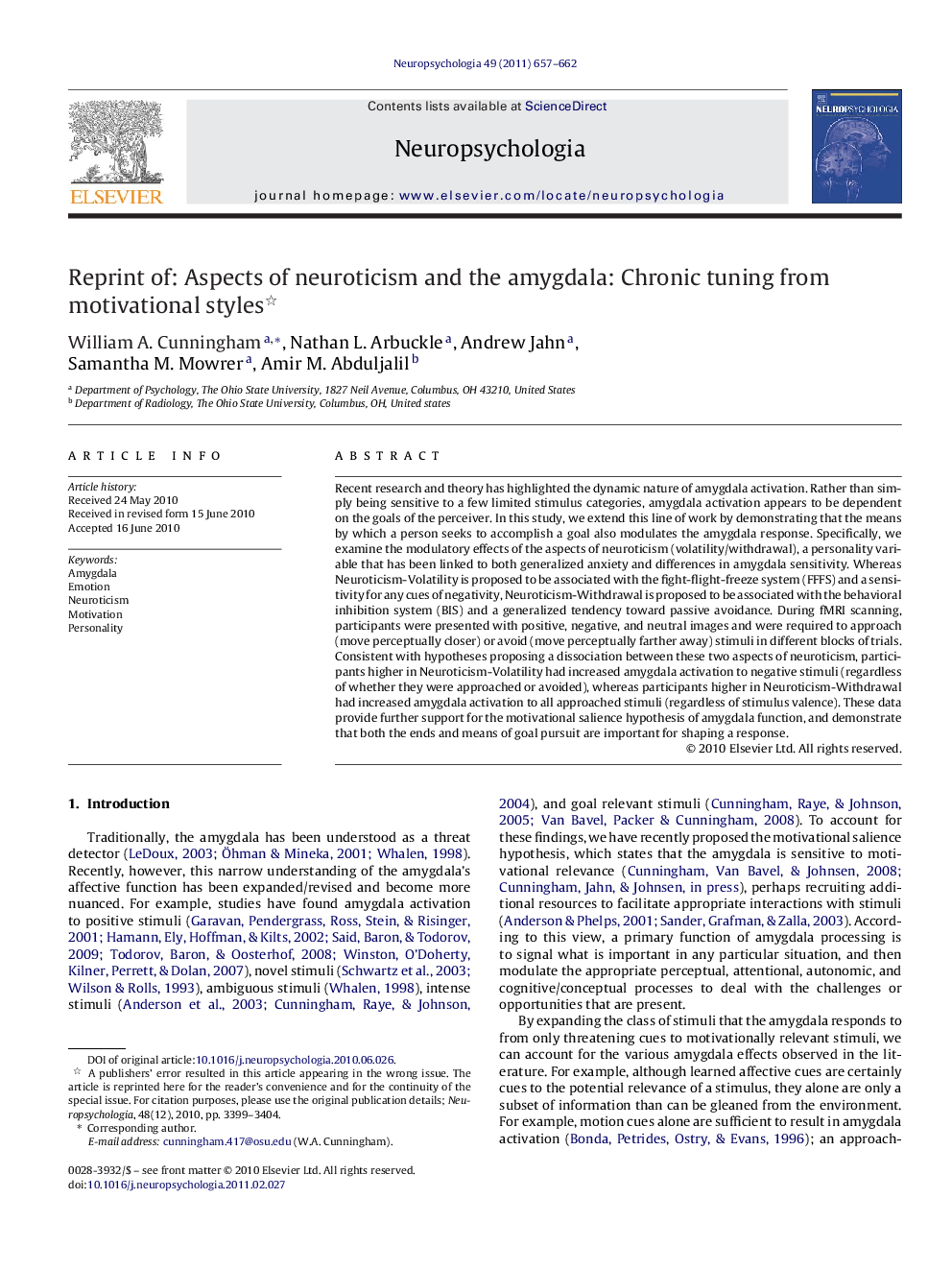| Article ID | Journal | Published Year | Pages | File Type |
|---|---|---|---|---|
| 10466033 | Neuropsychologia | 2011 | 6 Pages |
Abstract
Recent research and theory has highlighted the dynamic nature of amygdala activation. Rather than simply being sensitive to a few limited stimulus categories, amygdala activation appears to be dependent on the goals of the perceiver. In this study, we extend this line of work by demonstrating that the means by which a person seeks to accomplish a goal also modulates the amygdala response. Specifically, we examine the modulatory effects of the aspects of neuroticism (volatility/withdrawal), a personality variable that has been linked to both generalized anxiety and differences in amygdala sensitivity. Whereas Neuroticism-Volatility is proposed to be associated with the fight-flight-freeze system (FFFS) and a sensitivity for any cues of negativity, Neuroticism-Withdrawal is proposed to be associated with the behavioral inhibition system (BIS) and a generalized tendency toward passive avoidance. During fMRI scanning, participants were presented with positive, negative, and neutral images and were required to approach (move perceptually closer) or avoid (move perceptually farther away) stimuli in different blocks of trials. Consistent with hypotheses proposing a dissociation between these two aspects of neuroticism, participants higher in Neuroticism-Volatility had increased amygdala activation to negative stimuli (regardless of whether they were approached or avoided), whereas participants higher in Neuroticism-Withdrawal had increased amygdala activation to all approached stimuli (regardless of stimulus valence). These data provide further support for the motivational salience hypothesis of amygdala function, and demonstrate that both the ends and means of goal pursuit are important for shaping a response.
Related Topics
Life Sciences
Neuroscience
Behavioral Neuroscience
Authors
William A. Cunningham, Nathan L. Arbuckle, Andrew Jahn, Samantha M. Mowrer, Amir M. Abduljalil,
